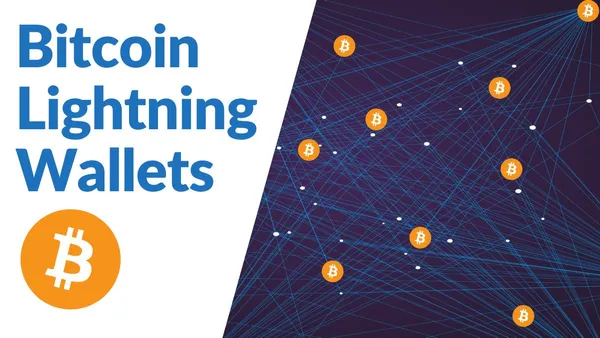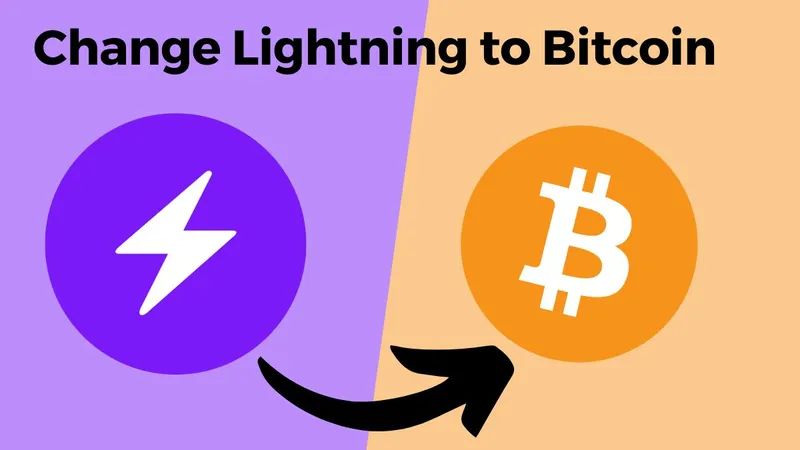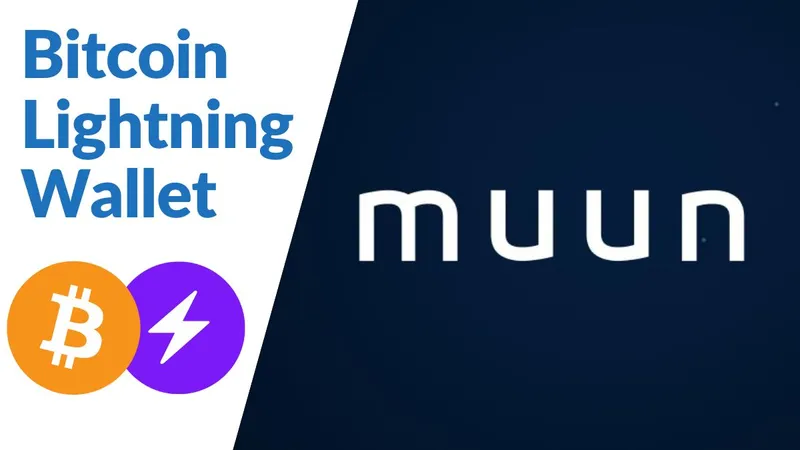With a Bitcoin Lightning Wallet users can make faster, more private, and cheaper transactions by using the Lightning network.
There are a variety of Lightning wallets on the market today, all offering different functions and features. In this article, we take a look at the best Bitcoin Lightning Wallets.
The following Lightning Wallets will be featured.
- Electrum
- Bluewallet
- Breez
- Phoenix
- Muun
- Zeus
- Wallet Of Satoshi
But first, let me explain how the Lightning Network works.
What is the Bitcoin Lighting Network?
The Bitcoin Lighting Network is a second-layer solution for scaling the Bitcoin Blockchain. The main element in the Lightning Network are Payment Channels, which allow payments to be made between two nodes outside of the Bitcoin Blockchain without fees.

Illustration of how Nodes are connected in the Bitcoin Lightning Network. Image source: Wikipedia
The history of the Bitcoin Lightning network.
The concept of the Bitcoin Lightning Network originated back in 2012 and was described in a 2015 whitepaper by Joseph Poon and Thaddeus Dryja. After Bitcoin received a great deal of attention in 2013 and 2017 due to a drastic price increase, it quickly became apparent that Bitcoin would have problems scaling when used as a global payment method.
The Bitcoin network can technically process only seven transactions per second. Credit card provider networks, on the other hand, can handle more than 40000 transactions per second.
The Bitcoin scaling problem: Bitcoin can only process seven transactions per second on the main chain.
When Bitcoin fees shot up to painful heights in 2017, there were two positions to solve the scaling problem. The majority of core developers wanted to solve it using second-layer solutions (like the lightning network). A minority wanted to raise the maximum block size of one megabyte to increase the number of transactions per second. The majority prevailed and from the minority group, among others, the Bitcoin Cash project was spun off.
Advantages of the Bitcoin Lighting Network
The Lightning Network increases the possible transactions per second from seven on the Bitcoin blockchain to several million transactions per second.
At the same time, the security of the Bitcoin blockchain is maintained by the decentralized network and the Proof-Of-Work algorithm in the Lightning Network.
Bitcoin units are reserved or blocked in so-called payment channels and can then be used for immediate, (almost) free, and private payments.
Different payment channels can be used in sequence (called routing) to send payments through nodes that are not directly connected.

Red: direct payment channel between two full nodes. Light red: routing across multiple payment channels and full nodes (from A to Q).
- Perfect for microtransactions due to very low fees.
- Instant confirmation of the transaction (no waiting for block confirmation)
- Improved privacy: Transactions are not publicly viewable as with bitcoin transactions
Distribution Lighting Network
The Lightning network is growing rapidly. There are now more than 20000 nodes (full nodes) in the network (Overview of current metrics). You should not confuse these with Bitcoin miners.
Not least because of the introduction of Bitcoin as a legal tender in El Salvador, where the Lightning network is an important part of the implementation. Feel free to check out my videos of Lightning payments in El Salvador on YouTube.
Additionally, the number of user-friendly Lightning Wallets is growing by the day. Therefore, it is no longer required to have a lot of technical knowledge to make Lightning payments. On the contrary, in my experience, Lightning network payments are much more intuitive and understandable than Bitcoin network payments.
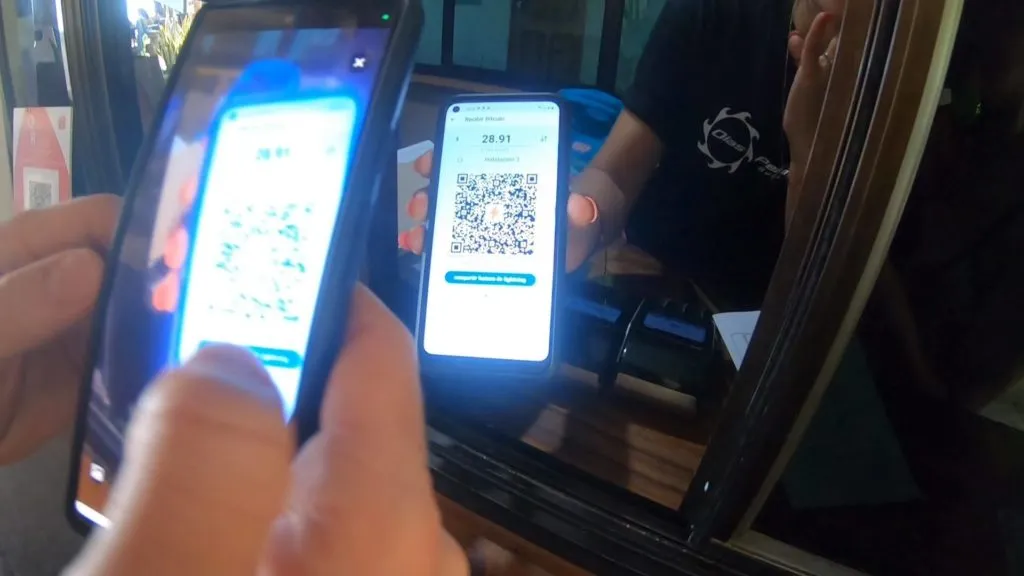
Lightning payment in a restaurant in El Salvador.
How does a Bitcoin Lighting Wallet work?
In order to receive or send payments on the Lightning network, a Full Node is required. You can set up and run your own (e.g. with Umbrel) or access existing full nodes of the wallet operators. I run my own and it's not that hard and expensive. However, in this article, I will not go into that, but we will use the full nodes of the wallet operators.
For payments, Lightning Invoices are created that are valid for a short period of time and contain information like amount and recipient. This is done automatically by the Lightning Wallet.
In order to make Lightning payments in the Wallet, you must make a one-time Bitcoin Onchain transaction to populate the Lightning Wallet in the payment channel. You can then spend this amount or less via the Lightning network. If you want to spend more, you must refill your Lightning Wallet.
Best Lightning Wallets
Electrum
Electrum is a popular Bitcoin wallet that has been around since 2011 and is open-source by design. The wallet is highly trusted in the Bitcoin community and is constantly evolving.
Since version 4.0.1, Electrum was one of the first Bitcoin wallets to integrate the Lightning Network.

Electrum is both a normal Bitcoin Onchain Wallet, and a Lightning Wallet. When creating new wallets, Lightning is automatically enabled. Older Electrum wallets may not have Lightning enabled. You can simply create a new wallet in this case.
You can open a new Lightning channel via the "Channel" tab under "Open Channel". You can then fill the channel directly from your Electrum Wallet or another Bitcoin Wallet and use Lightning. By default, Electrum is a Custodial Lightning Wallet.
Unfortunately, Electrum Wallet is not very user-friendly and the application is only available on desktop or Android. There is no version for iPhones running iOS.
Bluewallet
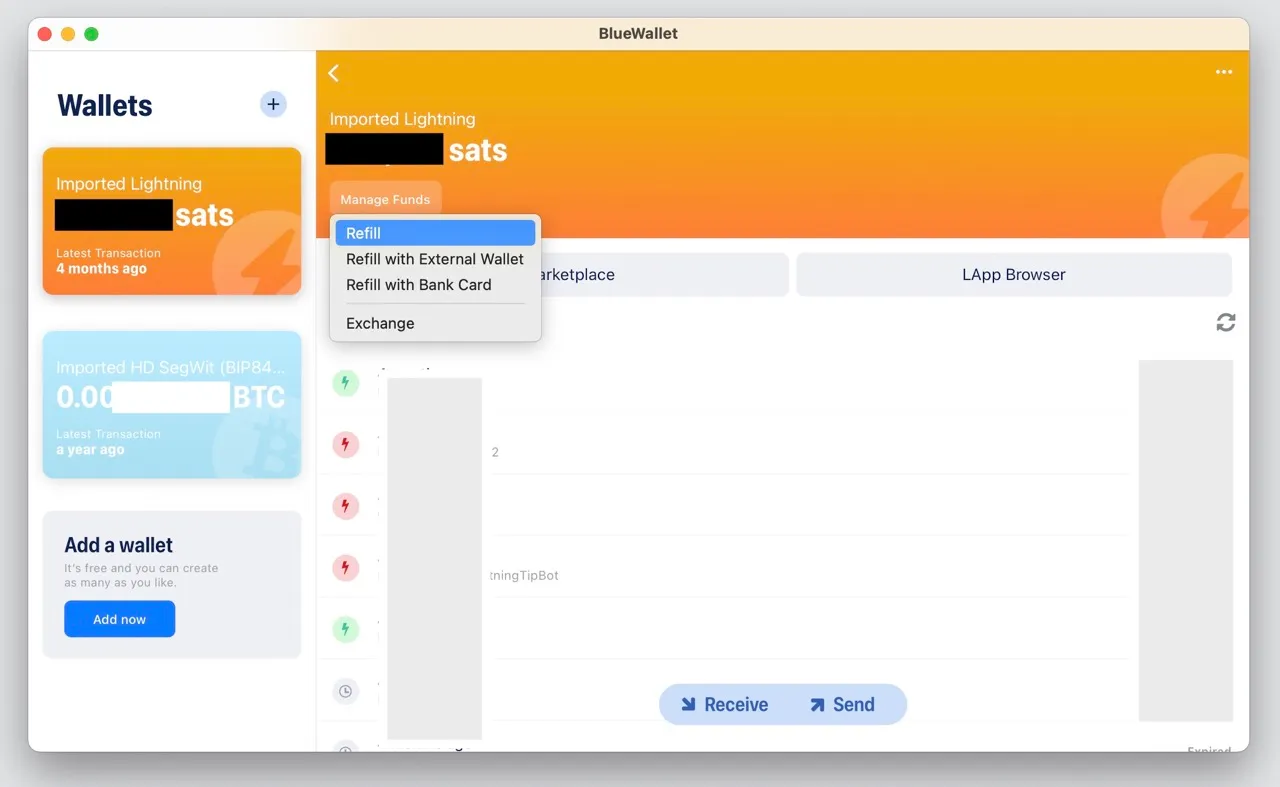
The Bitcoin Lightning Wallet Bluewallet is a popular mobile wallet application that allows users to quickly and easily perform bitcoin transactions on the Lightning network.
What makes the wallet special is its ease of use and ability to process both on-chain and off-chain transactions. A separate wallet can be created for both types of wallets.
Bluewallet allows users to easily open, close, and manage payment channels on the Lightning network, as well as perform fast and cost-effective transactions. The app is designed to be user-friendly, offering an attractive design and an intuitive user interface.
Moreover, Bluewallet also offers features like a backup and restore function.
Overall, Bluewallet is an excellent choice for those who want to quickly and easily perform bitcoin transactions on the Lightning network without sacrificing security or ease of use.
Breez
Breez is a mobile Lightning wallet specifically designed to use the Lightning network. What makes Breez special is that it automatically opens Lightning payment channels, allowing users to make transactions instantly without having to wait for confirmation from the Bitcoin network.
Breez also offers an intuitive user interface that makes it easy to send and receive payments. Overall, Breez is a great option for users who want to access the Lightning network quickly and easily.
Phoenix
Phoenix is a Lightning mobile wallet app that allows users to perform bitcoin transactions on the Lightning network quickly and easily. The wallet is particularly user-friendly and offers a simple and intuitive user interface.
Phoenix can automatically open and close channels on the Lightning network. This makes it easier and more convenient for users to use the Lightning network without having to worry about technical details.
Phoenix is a good option for users who are looking for a user-friendly wallet that is easy to use yet powerful.
Muun
Muun is a kind of "non-custodial" lightning wallet developed by a team of developers around Dario Sneidermanis. It is particularly user-friendly and follows the shared custody approach, which is comparable to Bluewallet between proper non-custodial Lightning wallets like Phoenix and Breez and custodial wallets like Wallet of Satoshi.
Muun is open-source and has an on-chain Bitcoin wallet in addition to the Lightning wallet.
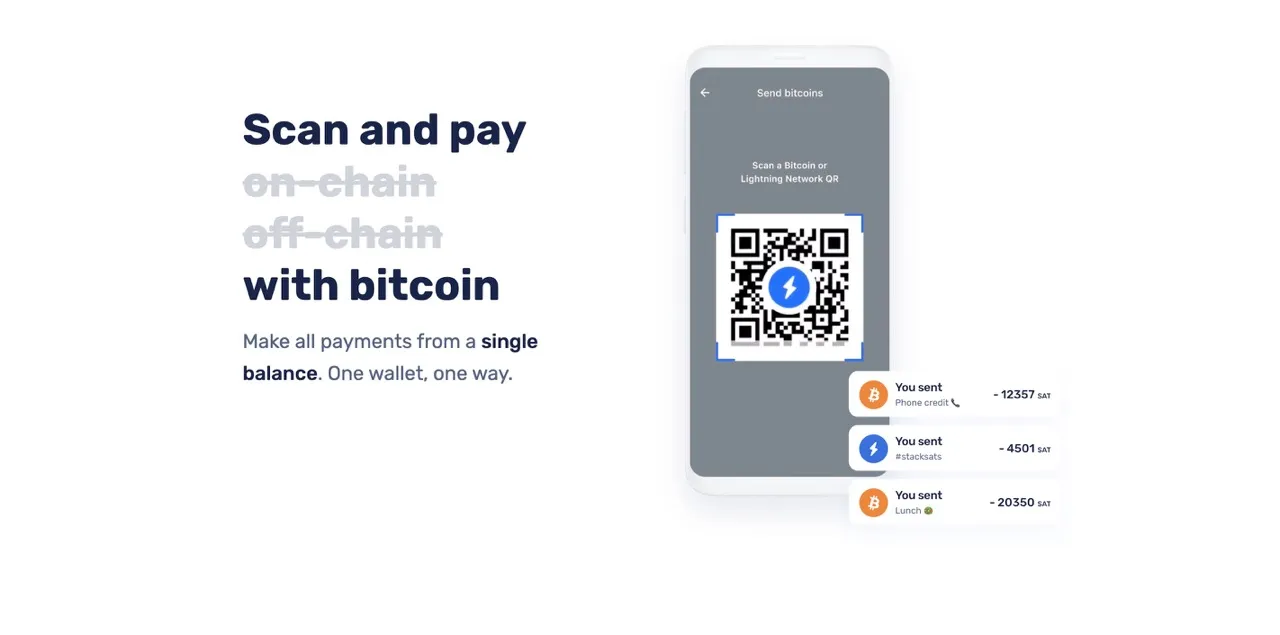
Zeus
Zeus is a mobile bitcoin node management app with all the features of a bitcoin lightning wallet that simplifies bitcoin payments, gives users complete control over their finances, and allows advanced users to manage lightning nodes from the palm of their hand.
Zeus is especially interesting if you own your own Bitcoin Node.
Zeus features
- Bitcoin-only wallet
- Non-custodial
- No processing fees
- No KYC
- Fully open source (APGLv3)
- Lightning accounts
- On-chain accounts
- Easy-to-use activity menu
- NFC payments and requests
- PIN or passphrase encryption
- Privacy mode - hide your sensitive data
- Send to Lightning addresses
- Full LNURL support (pay, withdraw, auth, channel)
- Connect over Tor
- Connect LNDHub instances
- Connect your own Lightning node(s) (LND, c-lightning (REST or Spark), Eclair, BTCPay)
- Lighting channel management
- Detailed routing reports
- Manage routing fees
- MPP/AMP support
- Keysend support
- Sign & verify messages
- Replace-by-fee (RBF) and Child-pays-for-parent (CPFP) support
- SegWit support
- Fiat currency integrations
- Multiple languages
- Multi-theme
Wallet Of Satoshi
Wallet of Satoshi is a mobile app for iOS and Android that lets you send and receive Lightning payments.
It is a configuration-free wallet with a focus on simplicity and the best possible user experience.

